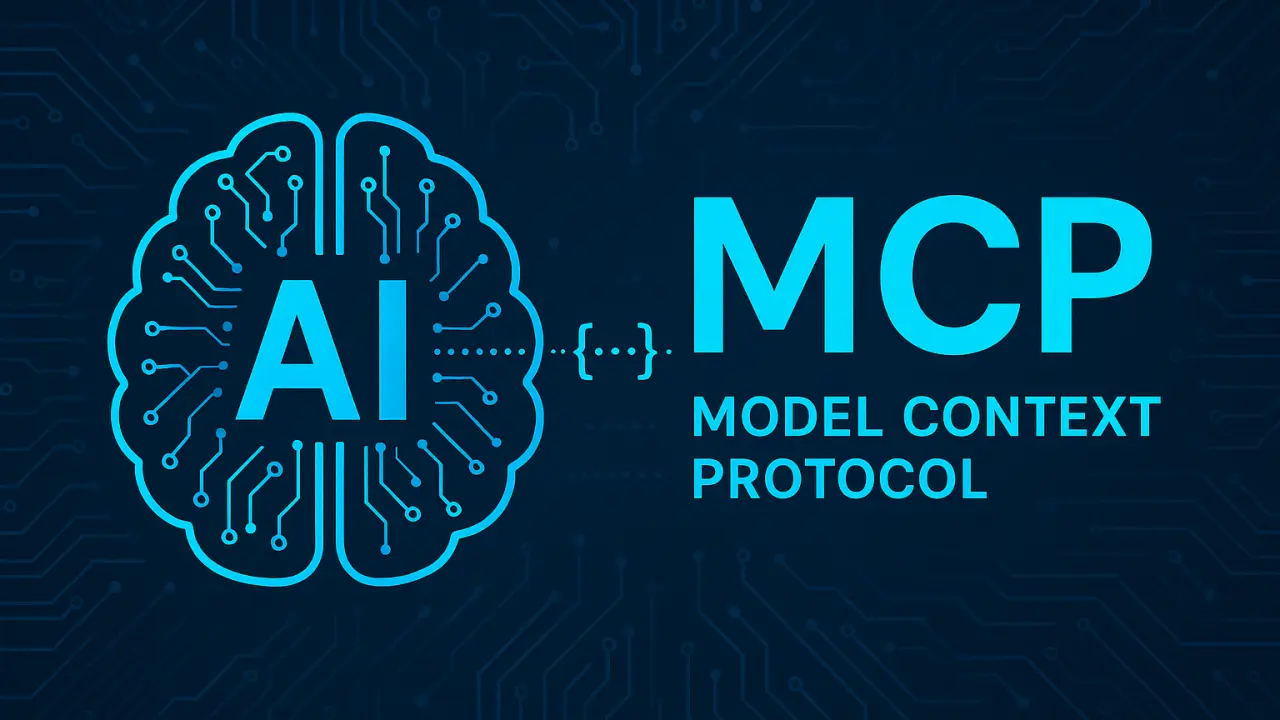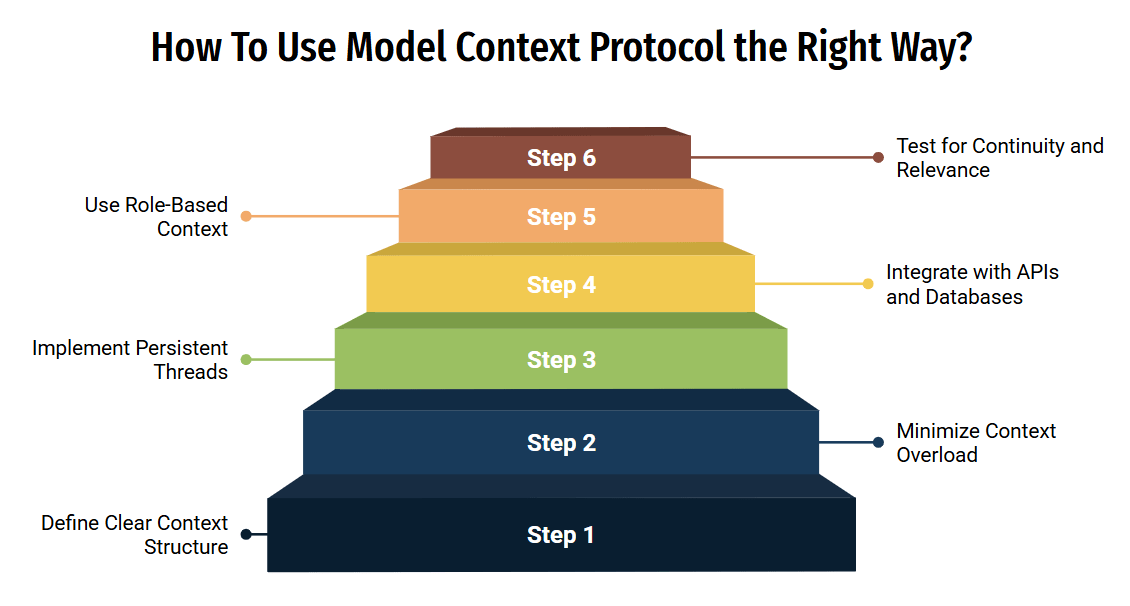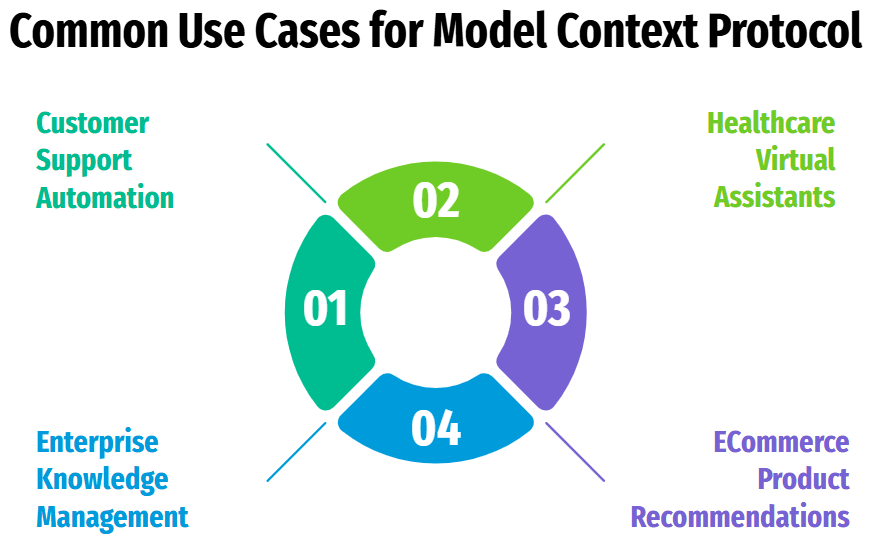

Table of Contents
As artificial intelligence progresses and finds applications throughout industries, developing skilled communication with AI models and applications will increasingly matter. Enter Model Context Protocol (MCP)—a robust system for reliable and predictable AI deployments.
Whether developing intelligent chatbots, automating customer service experiences, or applying AI to an organization’s software systems, understanding Model Context Protocol will be a key element of improving model performance and relevance. In this guide, we will explore the sections of MCP, its primary use cases, and best practices to implement it effectively to develop smarter, more relevant AI solutions.
What Is a Model Context Protocol?
Model Context Protocol is a standardized way of structuring and encoding context data to pass between the AI model and the application that interacts with it. Rather than treating each client input as a separate event, the model is able to use previous interactions, client preferences, system settings, and other metadata to create a human-like context-based AI experience that is more responsive.
You can think of MCP as a “conversation memory system” for your AI; it can not only respond but also respond intelligently, with continuity, and in a relevant manner.
Why Is Model Context Protocol Important?
Models built on single-turn inputs often produce generic outputs. Structured context offers several distinct advantages, in contrast:
| Benefits | Description |
| Improved Relevance | More contextually aware, personalized responses |
| Reduced Redundancy | No re-processing of preceding instructions |
| Personalization | Personalized experience across sessions |
| Cross-System Flexibility | Works across multiple systems or platforms |
| Memory Retention | Continuity over long interactions |
Key Components of Model Context Protocol
To better understand the meaning of Model Context Protocol, we will first break down its key elements:
Context Object
This includes all the metadata about the user or task. It can include such things as:
- User role or identity
- Current task or objective
- Environment parameters
- Information already shared
Thread/Session ID
This is used to identify ongoing conversation or form, which allows the model to continue with some sort of basis, even when it is fed data inconsistently.
Context Updates
These are events that dynamically update the model with new context at the point in time the user uses it. The intention is to allow the model to dynamically adapt.
Instruction Layer
These are instructions telling the context data to affect how the model acts. An illustration of an instruction may ask the model to focus on issues of security, provide a concise outline of comments, or speak formally.
How to Use Model Context Protocol the Right Way?
We’re very clear on what MCP is and why you should care about it. Now let’s look at ways to properly use Model Context Protocol for your AI systems:
Define Clear Context Structures
Be explicit about what context your application needs. Here are a few examples:
- Certifying the client and client expectations
- The current state of the project or workflow.
- domain knowledge or limitations
You should also be developing a context schema that can be reused in a range of models and applications to enhance standardization.
Minimize Context Overload
You will want to provide all the information possible to the model, but that may lead to execution delays or irrelevant output. Focus forays, keeping context very concise and relevant, and remember that context must be updated for each use.
By utilizing conditional logic, you will only include what is salient to that interaction.
Implement Persistent Threads
Ensure that interaction threads or session IDs persist longer conversations or tasks so your model can remember previous inputs, change with input from user feedback, and can carry on where interruptions were left off.
This is especially beneficial in customer service, project manager-type applications, or enterprise knowledge assistants.
Integrate with APIs and Databases
MCP allows your AI models to interface with internal APIs or databases. For instance, a banking AI assistant could reference a user agent’s account information, or list recent entries in their transaction history, or even check their credit score through context-based questions expected in the MCP space.
This provides the opportunity to upgrade your model from a generalized chatbot to a contextualized assistant.
Use Role-Based Context
When developing AI tools for organizations, think of context as role-based access. A manager, HR professional, and software engineer may continue to interact with an identical model, but they might all need a different answer based on their context role.
A role-based MCP is a way to scale compliance, contextual relevance, and personalization.
Test for Continuity and Relevance
Before going live, try to see if the model was able to keep the context and apply that understanding over multiple interactions. Test the following use cases:
- Switching between tasks
- Referencing previous questions
- Asking a follow-up
This will greatly assist you in developing a reliable and useful user experience.
Common Use Cases for Model Context Protocol
Customer Support Automation
MCP allows your AI to remember user queries in real-time through different modes of feedback (email, chat, and phone) for consistent intervention outcomes for the same issue.
Healthcare Virtual Assistants
AI can reuse patient context from a previous session (symptoms, medical history, and treatment plan) in many medical software programs.
E-Commerce Product Recommendations
The protocol will allow models to use data on past transactions, browsing history, or preferences for recommendations.
Enterprise Knowledge Management
MCP can help AI tools reach internal reports and summarize based on the office or employee role.
Challenges to Watch Out For
| Challenge | Risk |
| Data Leakage | If context is not cleared/segmented |
| Model Confusion | Caused by conflicting or vague metadata |
| Response Overfitting | Too much reliance on prior context can limit creativity |
Use proper governance, validation logic, and timed context refreshing.
Future of Model Context Protocol
As generative AI, LLMs and autonomous agents continue to evolve, it will be essential as a way to enable consistent and intelligent workflows. I envision personal AI assistants as well as discipline-specific AI copilots that will utilize the Model Context Protocol to enable contextualized knowledge that should do so in real-time.
As these new models advance, we will see greater amounts of use of multi-dimensional context, including text, audio, and visual input from users, and we will also see developments in context summarization, such that models can still be successful with richer information.
Conclusion
Understanding the Model Context Protocol is important if you have any interest in building next-generation AI systems that are more than intelligent, but thoughtful, well-rounded, and adaptable. Whether building an internal AI tool, customer-facing application, or a platform using AI, if you have executed the Model Context Protocol correctly, your models will have greater relevance, continuity, and value.
When businesses are able to successfully structure, manage, and evolve context data, they can tap into the full capability of AI throughout their digital transformation journey.
Ready to Build Smarter AI with Model Context Protocol?
NextGenSoft focuses on enterprise AI solutions such as LLM integrations, context AI development, and protocol-driven design and development. If you’re ready to improve productivity by embracing contextually aware AI, our experts can help you implement the Model Context Protocol the right way.
Contact NextGenSoft to learn how we can elevate your AI projects with context-aware insights!


